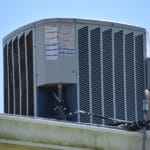Fireplace Safety: Signs And Prevention Of CO Poisoning
Fireplaces are used a lot during the dead cold of winter, but they also have to be handled carefully because a series of accidents can take place if the homomers ignore fireplace and chimney inspections. One of them is carbon monoxide poisoning. Here is everything you need to know about it.
What Is Carbon Monoxide Poisoning?
Carbon monoxide poisoning is a very dangerous thing that can affect the respiratory and nervous system of the body. This can cause a lot of issues like coughing, wheezing, and difficulty breathing altogether and if it’s not dealt with immediately, then it can lead to death by suffocation.
One of the most frustrating things about carbon monoxide is that it is colorless and odorless and you really can’t tell if you are inhaling it until it’s too late.
The symptoms of carbon monoxide poisoning include:
- Blurry vision
- Coughing
- Chest constriction
- Nausea
- Headache
- Dizziness
- Loss of consciousness
Fireplaces And Carbon Monoxide Poisoning
Fires can produce a lot of carbon monoxide. The reaction involved in the production of carbon monoxide is combustion and this gas is produced as a byproduct.
Unfortunately, fireplaces are the perfect places for combustion reactions to occur. Whether you have a wood fireplace or a gas fireplace, you’re not completely in the clear.
Carbon monoxide is odorless, but if gas leaks or a hissing sound is coming from the fireplace, then you need to be on high alert because something isn’t right.
Fireplaces are one of the major causes of carbon monoxide poisoning and it’s pretty scary that a seemingly harmless gas can do so much damage. It’s usually due to a blocked chimney or soot buildup in the chimney and fireplace.
This is why it’s better to be safe than sorry and have your fireplace and chimney inspected timely for any problems and perform chimney safety checks before using the fireplace.
If there’s a weird smell coming from the fireplace, the fire isn’t hot enough or if the fireplace and chimney haven’t been maintained in a long time, then you might need to get it checked because that’s not normal at all.
Prioritize the maintenance of your fireplace and chimney because it can determine life or death.
Signs Of Carbon Monoxide Leaks
Even though carbon monoxide is hard to detect, it is not completely impossible. Here are some signs to look out for, if you’re worried about carbon monoxide poisoning.
Smoke Building
If your fireplace is building up too much smoke, then that’s not a good sign at all. Smoke buildup can be caused by a lot of things. Poor ventilation, not cleaning the fireplace or chimney properly, and clogging of the chimney flue can lead to smoke accumulating in the room and that’s dangerous for anyone who’s been in the room for too long.
Flame Color
The color of the flame can be a really good indicator to figure out whether carbon monoxide is being produced or not. Usually, fire is bluish-purple at the bottom and light yellow at the top. If you see that the flames are entirely yellow and there’s no blue hue to the embers then this is a clear sign that the fire is producing a lot of carbon monoxide.
This isn’t your fault and there’s nothing you can do besides waiting out and letting the color of the flame go back to normal. Sometimes, the gas supply can get poisoned and this is why the flames have that color.
Soot Buildup
If you’re not cleaning your fireplace, then it’s a good time to take a peek inside. The inside walls of the fireplace will be covered in a slimy black substance. That’s soot. It’s a byproduct when wood is burned and it can also accelerate the production of carbon monoxide.
If you’re not someone who cleans the fireplace and chimney a lot, then this will be a regular problem. Creosote is another thing that can boost carbon monoxide production and can also increase the risk of chimney fire. The best way to go about this is have your fireplace and chimney cleaned by chimney sweep services Ellicott City once or twice a year.
How To Prevent Carbon Monoxide Leaks And Poisoning?
Carbon monoxide poisoning is dangerous, you get it; but there are ways to prevent it from deteriorating the health of others. Here are some things that you can try to stop carbon monoxide production, and ultimately, poisoning for good.
Clean The Fireplace And Chimney
This one is also something that goes without saying. Every appliance has its utility, but these nifty contraptions also come with a lot of maintenance. Think of it as a package deal. If you want the appliance to work properly, then you have to maintain it. The same goes for fireplaces and the chimney.
Since wood is constantly burnt in the fireplace, you want to ensure that the chimney and the base of the fireplace are clean at all times. If you can’t do it by yourself, then hire a professional to do the work for you. You won’t regret it.
Ventilation Is Key
This one is a no-brainer. If you’re cooped up in a closed room with no ventilation and the fireplace is blazing, then there’s going to be a higher chance of smoke accumulation and, ultimately, carbon monoxide poisoning. You want to ensure that you keep the room ventilated and the chimney is clean and unobstructed.
Let some fresh air get in so that if there’s any carbon monoxide, then it can be expelled out of the room once and for all.
Get An Air Purifier
If you want to take the prevention of carbon monoxide poisoning to the next level, then this tip will be a lifesaver. Getting an air purifier will ensure that the air around you is clean and filtered. An air purifier filters out all the impurities present in the air and it also helps the air to get free of carbon monoxide.
It’s something you can put in your room where the fireplace is and even in neighboring rooms so that you can protect everyone for sure.
Get Rid Of Ash
This kind of ties in with the previous tip, but you still want to take care of this bit too. If you have a wood fireplace, there’s going to be lots of ash in the burning tray. After every round of wood burning, make sure that you’re cleaning out the fireplace and getting rid of the ash.
This will not only ensure better performance of the fireplace, but it will also prevent over-burning of the ash, which in turn, can lead to carbon monoxide production. So, whenever you get the chance, sweep out the burnt wood and then fire up a new batch.
Co Monitoring Device
Technology can help you with detecting carbon monoxide in the air. If you live in a climate where fireplaces are crucial, then you need to consider getting this tool. It will change your life for the better.
These detectors have sensors that can detect carbon monoxide in the air. This makes it a lot easier for you to solve the issue because the problem is clear as day. These monitoring devices will alert you when the carbon monoxide levels are dangerously high and then you can rectify the problem. This is going to make everything easier.
Conclusion
Whether your run a wood-burning or gas fireplace, your house is at risk of carbon monoxide leaks and poisoning and things can take a deadly turn if you’re not too careful. So, consult chimney contractors Columbia MD who inspect your chimney and fireplace, and then perform cleaning and repairs as required.
Next PagePrevious Page


